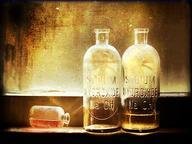Quiz Answer Key and Fun Facts
1. Rust is everybody's foe: it affects machine parts, leading to their wear-and-tear and adversely affecting their efficiency. It "eats into" the metal, thus making the metal much weaker, and more susceptible to breakage and damage. Of which metallic element is rust an oxide?
2. This oxide is the main constituent of sand. Quartz, the most abundant mineral in the Earth's crust, is a crystallised form of this oxide. Which oxide is this?
3. This metal has a very unusual oxide. While the oxidation of most metals in the form of tarnishing is considered a big pain because of the great financial losses which result, this metal has a very unusual oxide, which actually protects the metal from corrosion! Which metal's oxide is involved here?
(Hint: In the Earth's crust, this oxide is found in the form of bauxite.)
4. This non-metallic oxide is essential for the process of photosynthesis, which takes place in organisms that make their own food, and indirectly helps all living things on the Earth get their nutrition. Which oxide is it?
5. This gas is more commonly known as 'laughing gas', because of the effect it has when inhaled. It is used for anaesthetic purposes in dentistry, because it was found to lull the sensation of pain, while the victim remained semi-conscious. Which gas is it?
6. In the 1860s, this metal was used to produce studio lighting. How? It readily burned in air, forming its oxide, and producing bright white light in the process. Which metal was used?
7. This is a colourless, odourless, and highly toxic gas. It is formed as a result of incomplete combustion of carbon and its compounds, i.e., combustion in an insufficient supply of air. When inhaled, it enters the blood stream and attaches itself to haemoglobin molecules in the blood, thus making them incapable of transporting oxygen. It is emitted in large amounts by cars, where the temperature is too low for the complete combustion of the fuel. Which oxide is this?
8. Corundum is the crystalline form of a certain metallic oxide. Naturally, it is clear, but with the addition of impurities, it can have many different colours. In fact, the very precious and coveted-by-all ruby (red in colour) and sapphires (not red in colour) are forms of corundum. Of which metal is it an oxide?
9. Which non-metallic oxide, when dissolved in water, forms sulphuric acid?
10. And finally, an easy one to end. When hydrogen heats, it reacts with oxygen and burns with a popping sound. Which common compound is formed as a result?
Source: Author
achernar
This quiz was reviewed by FunTrivia editor
crisw before going online.
Any errors found in FunTrivia content are routinely corrected through our feedback system.


